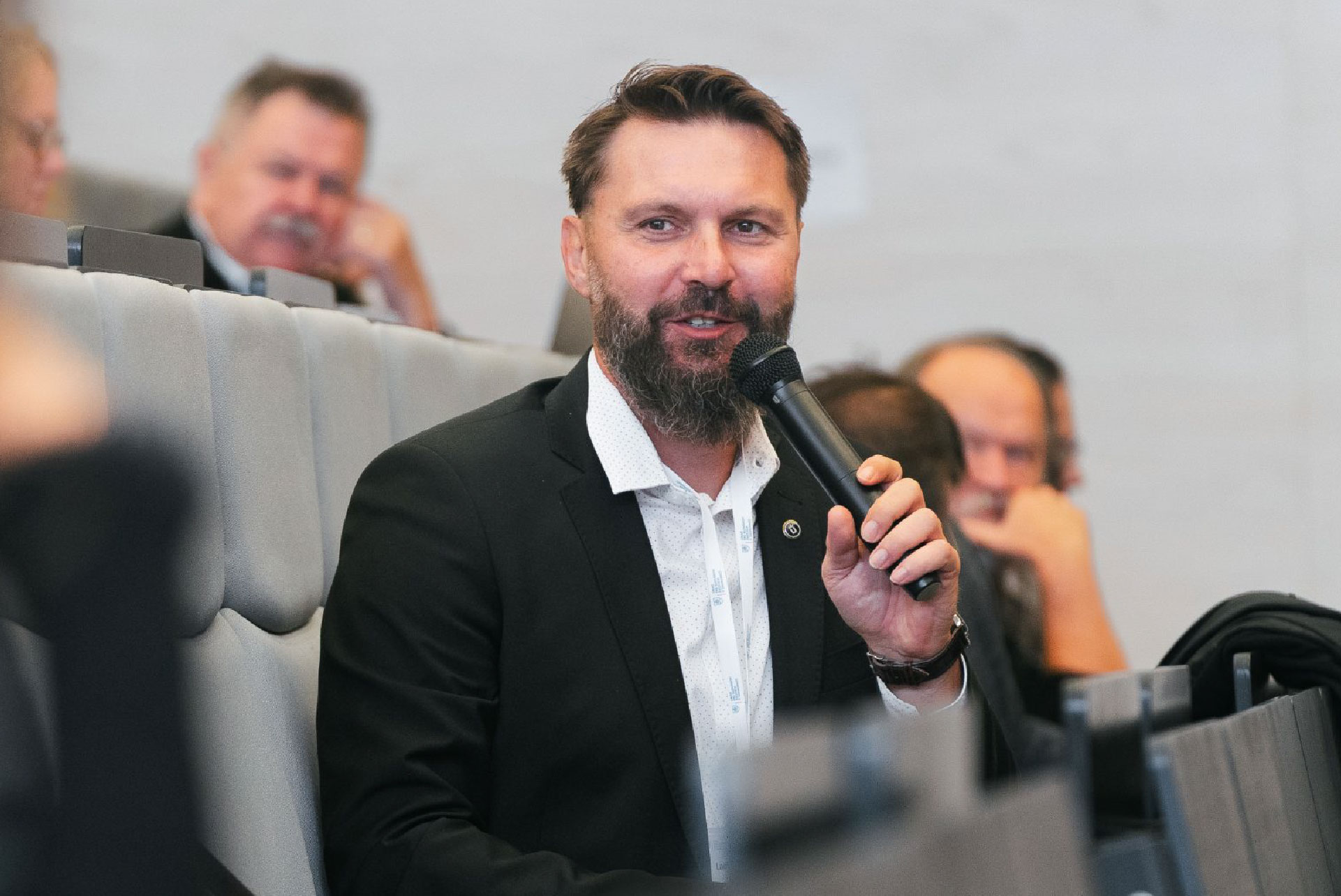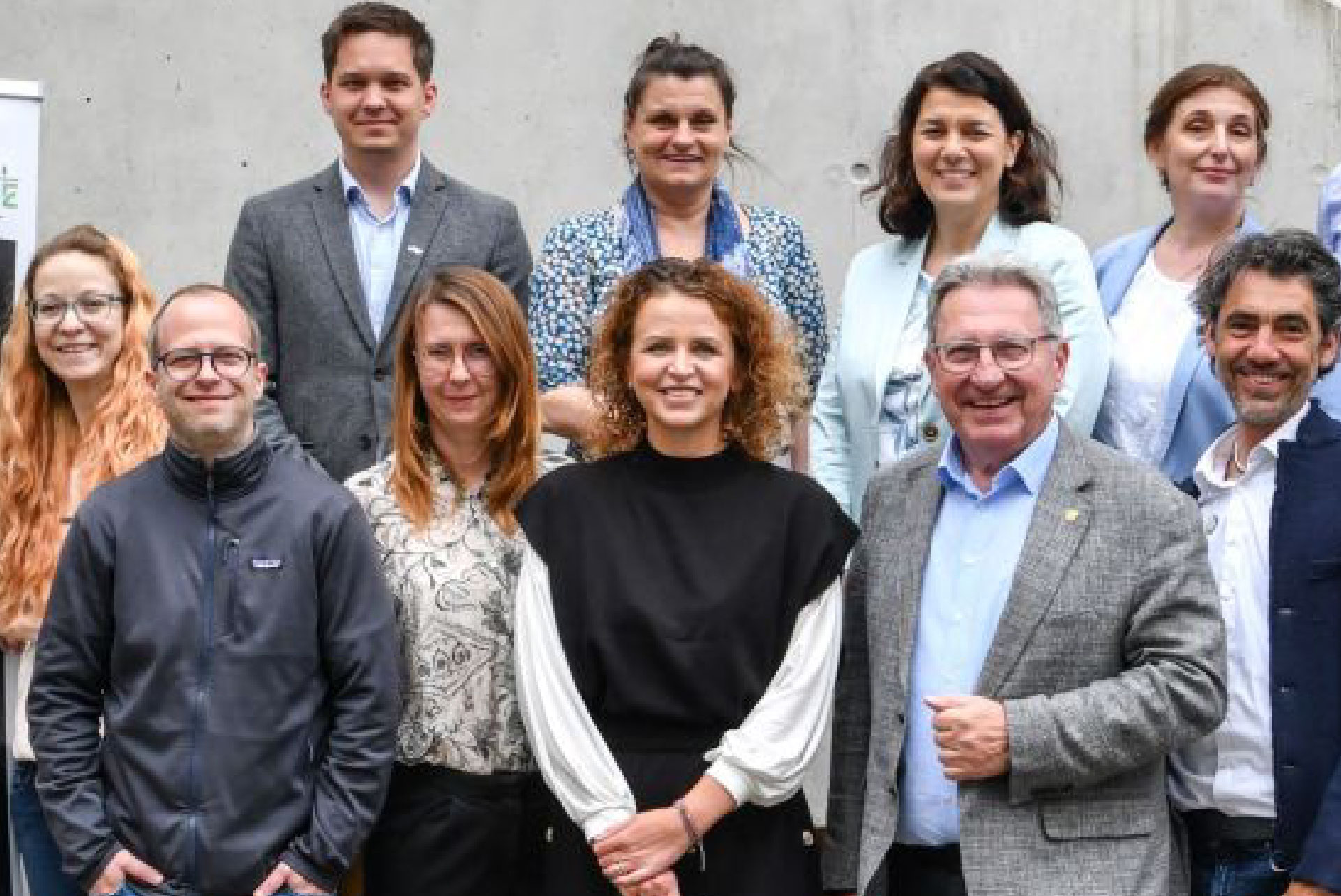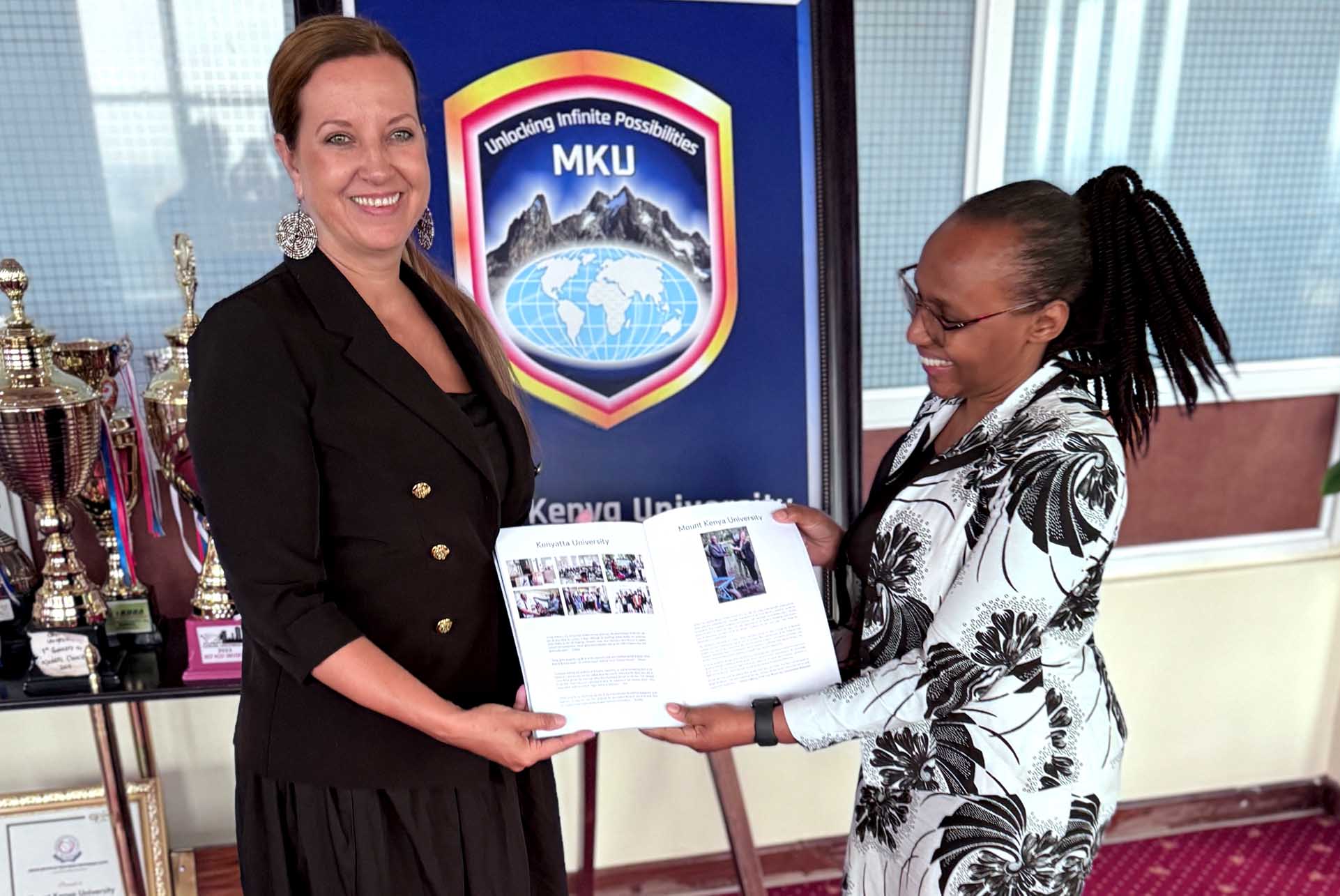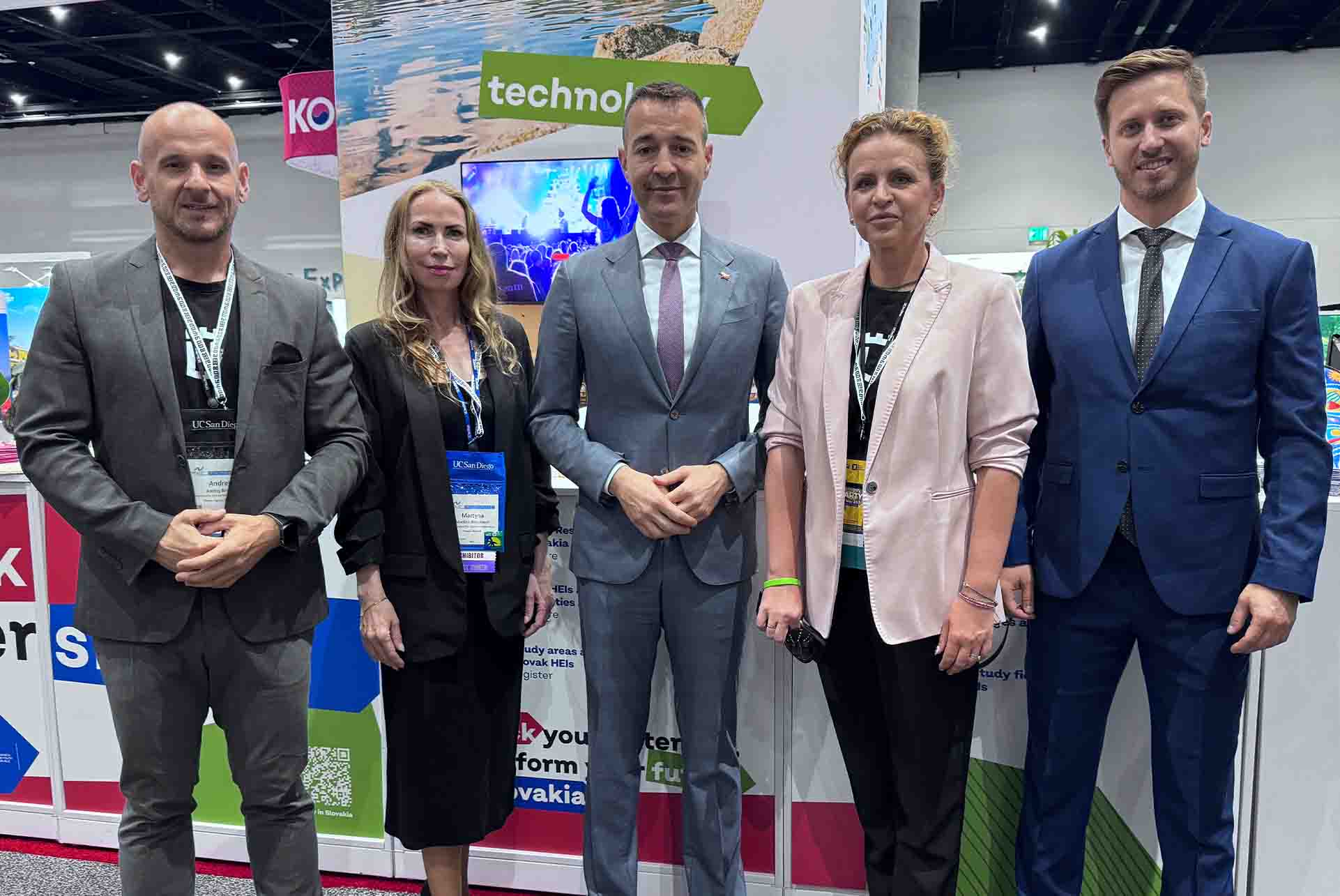
They visited Kenya in the autumn, now they are organising an exhibition with a collection for Maasai pupils
Originally published on the web fmk.ucm.sk, 4.6.2026
In October 2024, a group of six teachers, lecturers and PhD students of the FMK completed a pedagogical mobility to Kenyatta University, Kenya's second largest university, based in the capital Nairobi. This was not a one-way, one-off affair; Kenyans were coming to Slovakia for a change.
The management of the faculty is preparing a rich programme for them in order to introduce them not only to our institution, scientific research activities or faculty media and other workplaces, but also to the countryside, nature and culture.
Hakuna matata – this is the philosophy of life without worries
One of the planned activities was an exhibition entitled "Kenya yetu hakuna matata", which loosely translated from Swahili means "There are no problems in our Kenya" (a line from the famous Swahili song Jambo bwana). It took place on Thursday, June 5, opposite the Student Free Zone at Nam. J. Herdu 2, where it can be found until the end of November 2025.
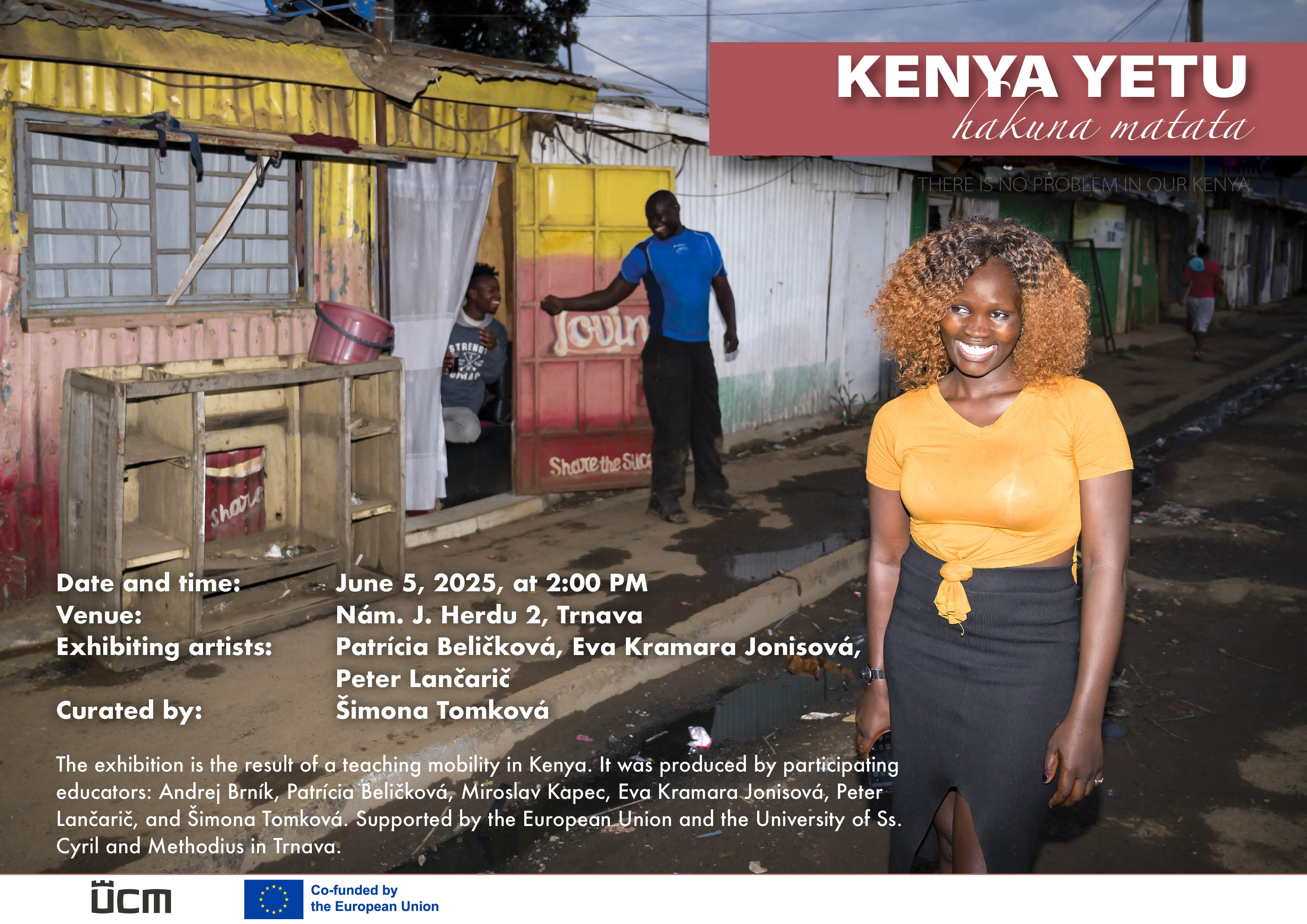
Members of the autumn Erasmus mobility in Kenya Andrej Brník, Patrícia Beličková, Miroslav Kapec, Eva Kramara Jonisová, Peter Lančarič and Šimona Tomková are involved in the production of the exhibition. The photos are exhibited by Beličková, Lančarič and Kramara Jonisová.
"Being able to capture all the contrasts - the everyday carefree life of the locals, the animals in the wild, but also the immense poverty in the slum - was a powerful experience for me. Even today, when I go back to these photographs, thoughts of how lucky we are in so many ways come to mind," says photographer Belichkova, a PhD student in marketing communications. Dr. Lančarič, who teaches photography courses at FMK, joins in and talks about the slum experience, "We took photos sensitively. And there was a sense of acceptance from many of the people we met - just as they made us feel genuinely interested in their existence, not fascinated by their poverty. These people's belief in photography reignited a spark in me - to believe in the meaning of social photography as well."



In addition, they collected their experiences, photos from the trip and memories and published a 90-page zine of the same name. In it, the author collective returns to Kibera, Africa's largest slum, to a safari where they saw the complete so-called Big Five, to the Maasai tribe, to Nairobi and Mombasa, and to the premises of Kenyatta University, whose main campus is as big as the whole of Trnava.
"This publication is our joint report on Kenya - it is not a tourist guide with useful tips for trips or detailed information on partner universities. Rather, it is a personal reflection on a beautiful country full of remarkable people," the editorial says. The publication will also serve as promotional material for the Erasmus+ programme, with the aim of motivating university staff to go on mobility even to less traditional destinations. Both the exhibition and the zine were made possible thanks to the financial support of the University and the European Union.
They want to help, they announce a collection for the school
They know that there are many similar initiatives and collections for the poorest of the poor. As educators, they therefore decided to focus on supporting education in a particular Maasai school Oloolaimutia, which they visited during their trip and where they saw a real need for help. It is located near the entrance to the Maasai Mara National Park. In this Maasai village, the tribesmen live in a traditional way - they build mud houses, hunt game, have a chief and recognise polygamy.
„However, even there they are already aware of the need to educate themselves. Children from several Maasai villages in the area attend the Oloolaimutia school here, some walking as far as seven kilometres there and seven kilometres back every day. We have visited this place, which means hope for many young Kenyans, and we want to help," they said in a statement.
Today, the public primary school provides education to more than 1,400 boys and girls. But many girls leave school early - instead of school, they are married off at a young age. "When we visited this school, the children were just leaving for holidays. They were waving their report cards enthusiastically in front of us, explaining which subject they enjoyed, looking at our cameras. Then we found ourselves in the premises where they received their report cards, in a place where we, as Central Europeans, cannot imagine educating our children," says one of the participants, doctoral student Šimona Tomková.





In classrooms with floors made of trampled clay, there can be up to a hundred pupils at a time, often sitting four to a desk. The capacity of the school is often overstretched, there is a lack of textbooks, desks and supplies. In 2012, the school became a boarding school for seventh and eighth grade girls so they could be safe and focus on their studies. Thus, they live in very modest conditions, with minimal privacy, lack of mattresses or hygiene supplies.
"The school principal welcomed us to his office. He talked about the fact that the functioning and improvement of the facility is dependent on the contributions of volunteers. He pointed to the wall where there is a handwritten pink list of things he would like to provide for the pupils over time," Tomková adds.
The money raised will be used by the school to provide other necessary equipment and supplies such as books, stationery, desks and equipment for the schoolyard. The collection was launched on the Donio platform.
Photo source: archive P. Beličkovej, E. K. Jonisovej a P. Lančariča


